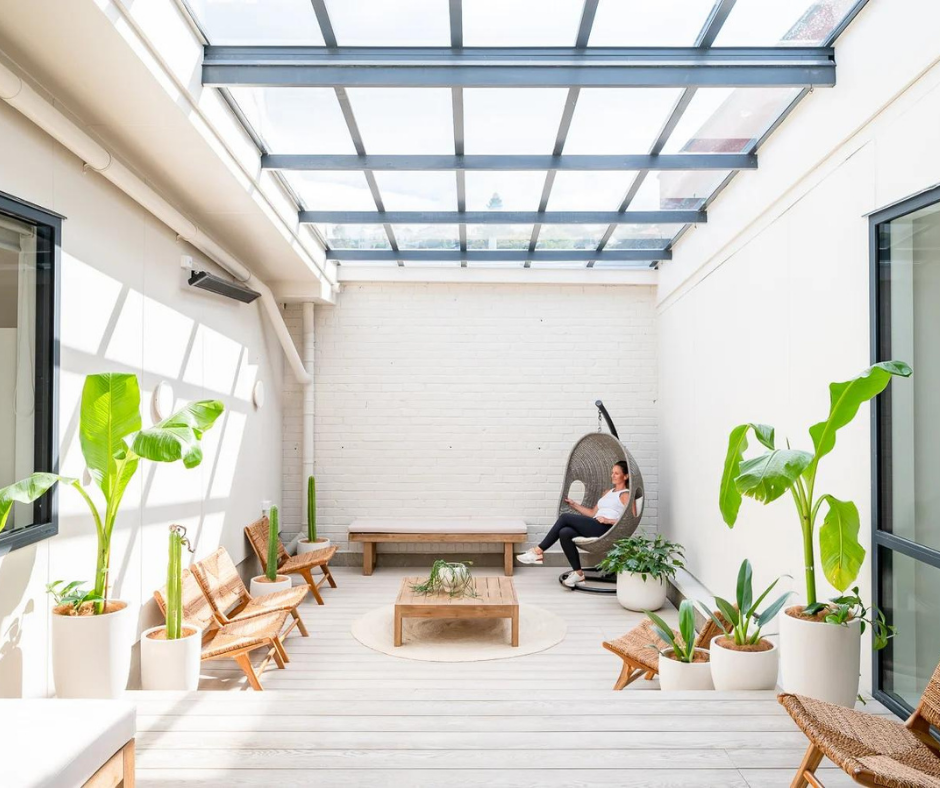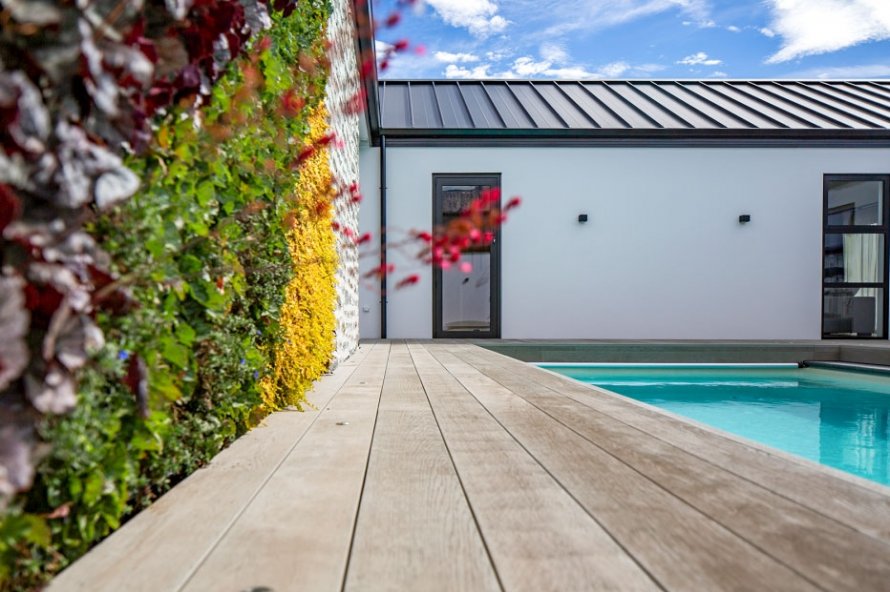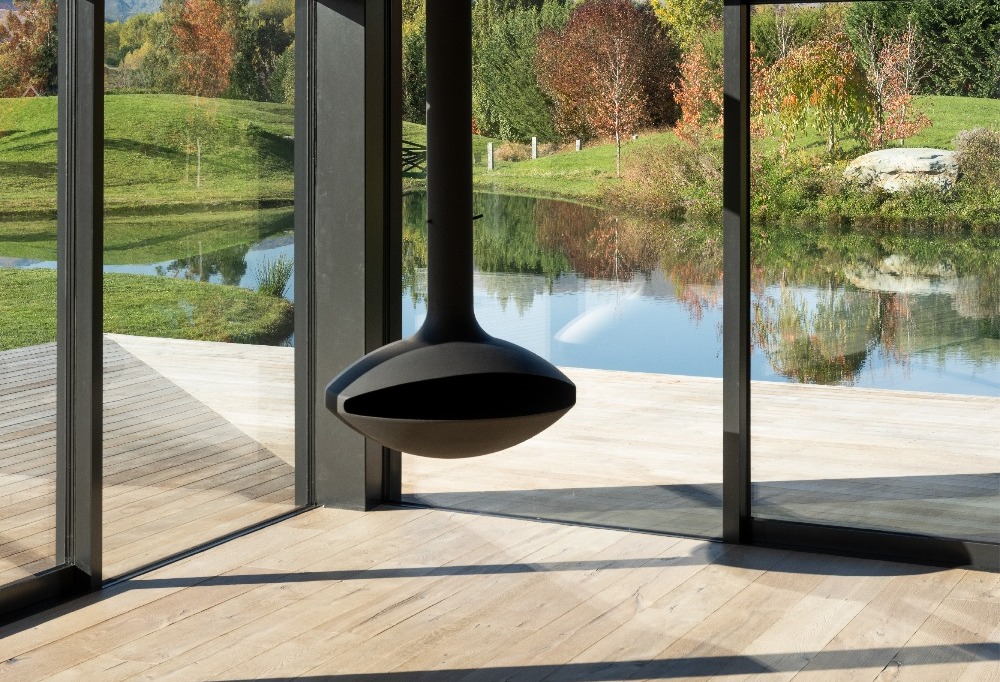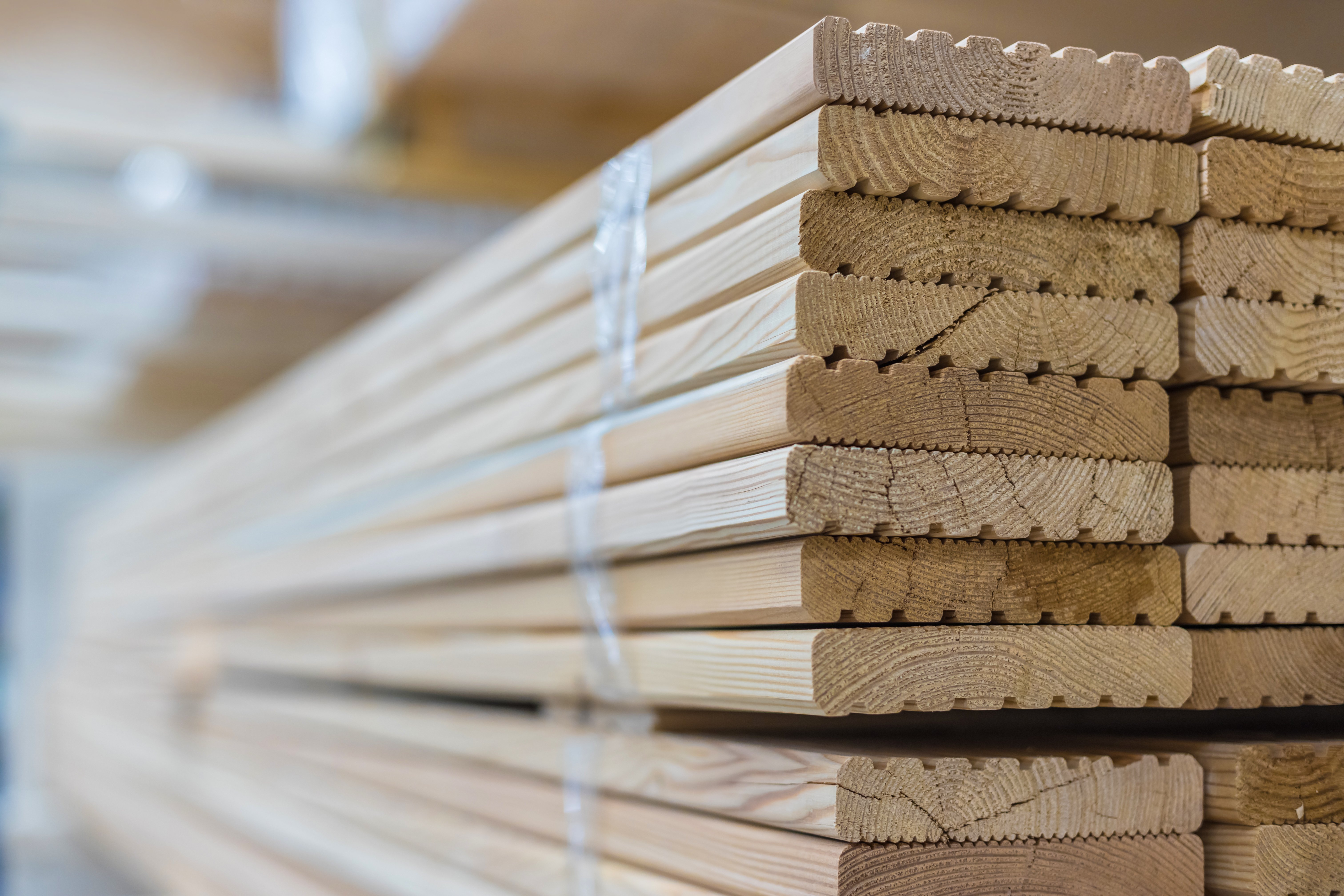What is composite decking?
Blog |

Building a deck is a fantastic way to maximise outdoor living space and accessibility but choosing the right product can be daunting. While traditional decking timber has been used in the past, composite alternatives are becoming increasingly popular and their benefits are hard to ignore.
In this article, we explain the basics of composite decking, including the pros and cons, and installation advice.
Composite decking
The term ‘composite’ is used to describe a material that is made of more than one substance. In terms of composite decking, it can be used to describe a mixture of natural and/or synthetic ingredients.
Most composite decking boards are a mixture of wood fibre, thermoplastic, and chemical additives. However, there are some options that are thermoplastic-free using polyurethane to bond natural materials.
There are typically two categories of composite – uncapped wood composite and capped wood composite. Uncapped composite has exposed wood ingredients and is susceptible to mould and mildew. On the other hand, capped wood composite boards are sealed in a plastic shell or coating to offer increased protection.
Composite vs timber decking
Timber or wood decking is the most common type of decking in New Zealand. Anyone who has owned a house with timber decking, or visited one with this feature, will know that it looks great for many, many years. However, over time, the elements and use take their toll. Timber decking is relatively affordable but it is prone to mould, fading, rotting, and warping. If you prefer the natural beauty of wood and are willing to invest time in maintenance, timber may be sufficient.
However, if you prioritise low maintenance, durability, and longevity, composite decking may be the wiser choice. In most cases, composite decking will not provide the exact same authentic appearance as wood but this may be worthwhile if it lasts longer.
Pros and cons of composite decking
Before you decide which decking product to use, read the key advantages and disadvantages of composite decking below.
Pros of composite decking
Low maintenance
Composite decking requires less upkeep because it contains plastic and synthetic substances. Unlike timber decking, it doesn't require staining, sealing, or regular painting. It's also less susceptible to rot, insect damage, and fading.
Durability
Composite decking is highly durable and can withstand harsh weather conditions. It can also resist UV rays, moisture damage, warping, splintering, and fading. Some composite decking warranties extend over 25 years, showcasing their longevity.
Sustainability
In some cases, composite decking is made with recycled plastics or sustainably sourced timber composites. The former gives wasted plastic a new lease of life and reduces the amount going to landfill.
Cons of composite decking
Can contain thermoplastics
Thermoplastics soften as more heat is applied and then harden when cooled. While this makes them easy to mould into the desired shape, it can also lead to warping once your deck has been laid.
Fortunately, there are some alternative decking products that are made without thermoplastics, such as the Millboard range designed to provide mechanical strength, chemical resistance and durability.
Cost
Compared to timber, composite decking typically has a higher upfront cost. However, it is worth noting that the long-term maintenance savings will usually make it more cost-effective over time.
Appearance
While it does come in a range of colours and finishes, some of which pass for wood, composite decking cannot exactly match the appearance of real wood. However, to achieve an authentic wood grain, our Millboard decking uses real wood samples moulded into resin.
How to install composite decking
Composite decking installation is the same as timber decking planks except you don’t need to sand it, stain it, or paint it. It can be drilled, cut, fastened, and routed with standard woodworking tools. The key installation steps for our Millboard decking are as follows:
- Build the substructure, using joists and risers to ensure it is level.
- Lay the composite planks, using a spacer between boards.
- Secure the boards.
- Install fascias and square edging.
- Apply a coating as needed.
You can find all the decking accessories you need in our range, including the Durafix screws, joists, joist risers, self-levelling joints, joist cradles, spacer tools, and side-fixing guide kit. We also have a wide range of fascias and square edges from the Millboard range, ensuring your deck looks high-end and cohesive.
If you need to store your composite decking before installing it, it should be stored flat and dry. Depending on the board length, you will need to add multiple supports to keep it off the ground.
Millboard decking
Unlike standard composites, Millboard decking is made from natural minerals bonded in polyurethane resin and contains no thermoplastics. This revolutionary product is reinforced with mineral fibres to reduce wear and tear while retaining the appearance of real wood. Each board is carefully moulded from oak samples and hand-tinted for a real-wood look finish.
The appearance of Millboard decking is virtually indistinguishable from wood but is far superior in longevity and performance. With no real wood content, it doesn’t rot, warp, fade, or encourage algal growth. Additionally, each board has a non-porous surface layer of Lastane® for stain and slip resistance, even when wet.
In terms of maintenance, there’s no need to apply expensive treatments – just an occasional wipeover with standard household floor cleaners.
Why choose Millboard decking?
In addition to the durability and low maintenance qualities of composite decking, Millboard decking offers the following benefits as well:
- 100% thermoplastic-free
- Authentic real-timber appearance
- Never requires staining, oiling, or colouring
- Fade and stain-resistant
- Splinter free
- Exceptional slip resistance
- UV resistance and weathering stability
For inspiration, accessories, and specifications, explore the full Millboard decking range. The standard plank size is 150-200mm and is available in a wide variety of colours, including light, natural, grey, beige, brown, and black.
Visit one of our Showrooms
If you have any queries about our products or need help with your project, we can provide you with expert advice. Visit one of our showrooms or book a consultation with our flooring experts today.



